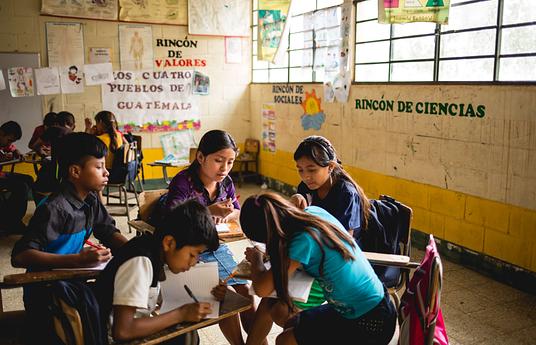Student Vote was born out of the need to teach kids about voting, foster their connection to the community, and eventually reverse the decline of voter turnout.
Research shows that voting is habitual. By practicing the habits of active and informed citizenship now, students will be more prepared to participate in their democracy when they reach adulthood.
Student Vote turns real-life political events into teachable moments and creates a dynamic, immersive learning experience.
Through the activities, students:
-Delve into the principles of democracy and the vital responsibilities of citizenship.
-Explore the different levels of government
-Analyze how government impacts their life
-Discuss strategies for informed citizenship in the digital age
-Explore the political spectrum and diverse perspectives
-Review the electoral process and how candidates are chosen
-Discuss relevant political issues
-Gather, synthesize and analyze information about the parties and/or candidates, and
-Engage with the candidates directly through meetings or debates.
In the culminating activity, students take on roles of election officials and organize a vote, allowing students to cast ballots for the official candidates. The Student Vote results are shared publicly and with media for broadcast and publication — giving students a voice in the election.
The first Student Vote took place in the 2003 Ontario provincial election. More than 300,000 students learned about government and democracy, and cast a Student Vote ballot.
Since 2003, CIVIX has organized 63 Student Vote elections in Canada, with over 8 million ballots cast. The largest election engaged 1.2 million students from 8,000 schools, with participation in all 338 electoral districts.
The success of Student Vote sparked interest internationally and the first program in Latin America took place in Colombia for the 2018 Presidential election. The program has grown exponentially in Colombia ever since, engaging 247,077 students from 15 provinces during 2023.
In 2022, Chile schools also embraced the program during the constitutional plebiscite, with 62,000 students from 350 schools.
If you are an educator where Student Vote is being offered, you can sign up for free. Once registered, you’ll receive pedagogical resources, election supplies, support and training to deliver the program.
If you are an electoral agency or department of education that is interested in offering the program during your elections, please contact us. We’re keen to bring the program to more countries!



